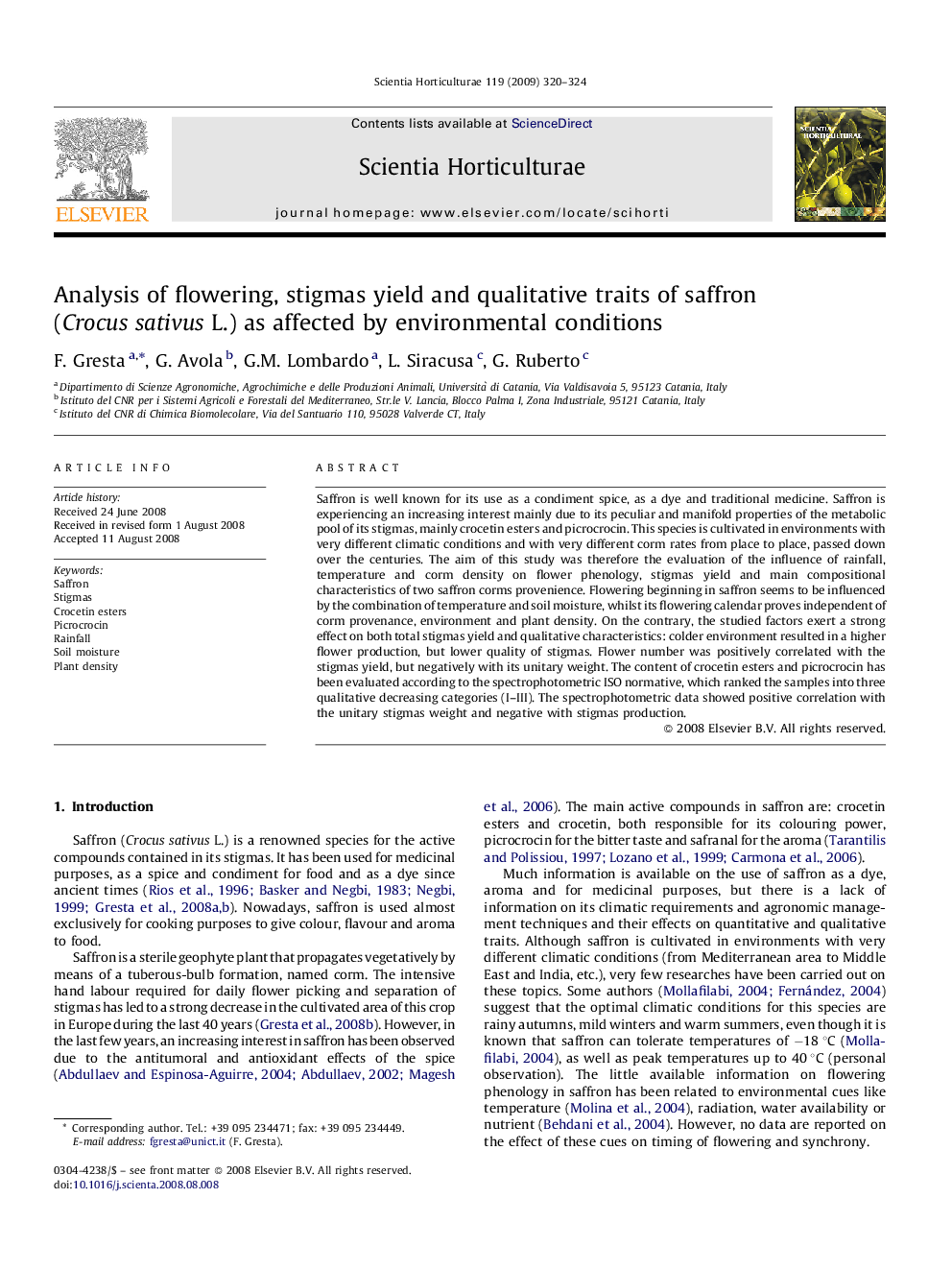| کد مقاله | کد نشریه | سال انتشار | مقاله انگلیسی | نسخه تمام متن |
|---|---|---|---|---|
| 4569171 | 1331326 | 2009 | 5 صفحه PDF | دانلود رایگان |

Saffron is well known for its use as a condiment spice, as a dye and traditional medicine. Saffron is experiencing an increasing interest mainly due to its peculiar and manifold properties of the metabolic pool of its stigmas, mainly crocetin esters and picrocrocin. This species is cultivated in environments with very different climatic conditions and with very different corm rates from place to place, passed down over the centuries. The aim of this study was therefore the evaluation of the influence of rainfall, temperature and corm density on flower phenology, stigmas yield and main compositional characteristics of two saffron corms provenience. Flowering beginning in saffron seems to be influenced by the combination of temperature and soil moisture, whilst its flowering calendar proves independent of corm provenance, environment and plant density. On the contrary, the studied factors exert a strong effect on both total stigmas yield and qualitative characteristics: colder environment resulted in a higher flower production, but lower quality of stigmas. Flower number was positively correlated with the stigmas yield, but negatively with its unitary weight. The content of crocetin esters and picrocrocin has been evaluated according to the spectrophotometric ISO normative, which ranked the samples into three qualitative decreasing categories (I–III). The spectrophotometric data showed positive correlation with the unitary stigmas weight and negative with stigmas production.
Journal: Scientia Horticulturae - Volume 119, Issue 3, 3 February 2009, Pages 320–324